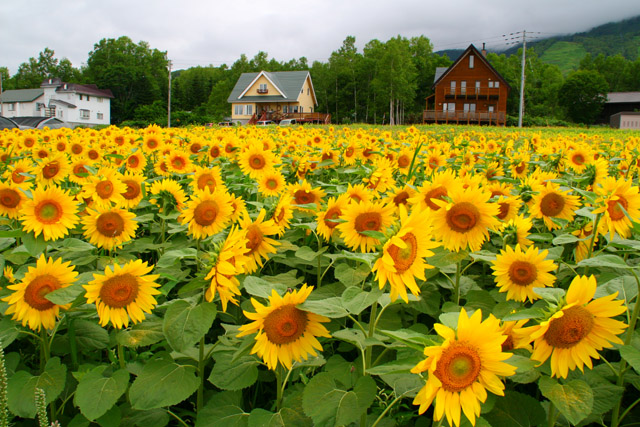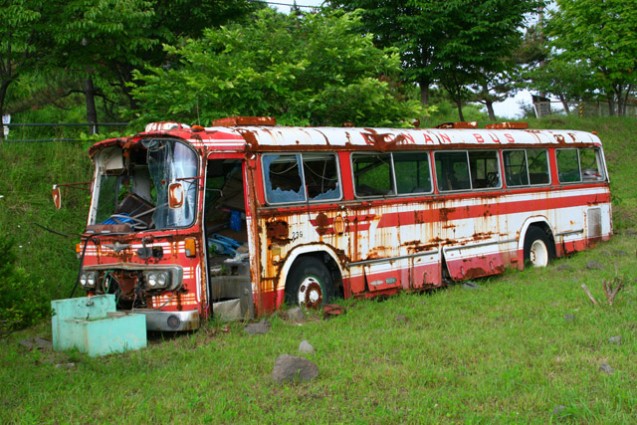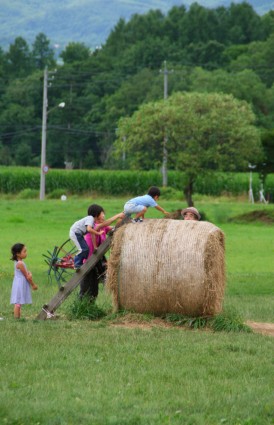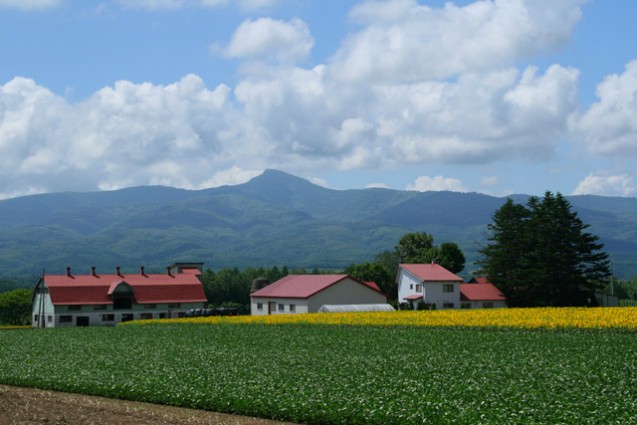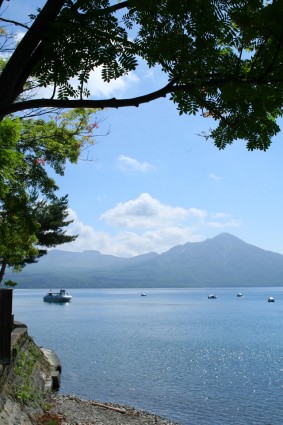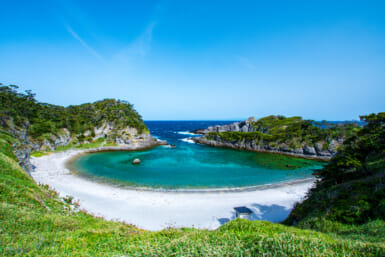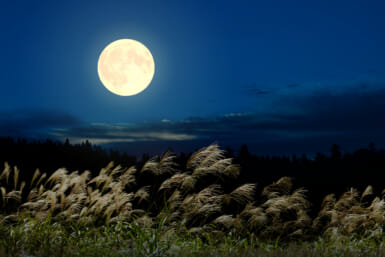Summer in Hokkaido’s south west offers a chance to escape the heat and more – you certainly don’t have to be a skier to enjoy this ever-pleasant land.
by Andrew Ng
When the volcano erupted the kindergarten didn’t really stand a chance. Boulders and rocks, hurled 3,200 meters into the sky, tore with ferocity through the roof and walls, shattering the classrooms of the Toyako Kindergarten, which lay only 600 meters from the first crater on the Nishi-Nishiyama cryptodome.
Still today, hundreds of those rocks and boulders are strewn across the playground of the school, like an angry giant’s spent buckshot, with one boulder still lodged in the back wall.
Happily, all the children escaped the eruption in 2000, and the abandoned school now forms part of Hokkaido’s Toya Caldera and Usu Volcano GeoPark, an area that starts a stone’s throw from the southern shores of Lake Toya.
Lake Toya and the volcano trail
The 110,000-year-old caldera lake is where my mini-geotourist excursion began, on a boat that looked like a castle. This monstrosity is embarrassingly at odds with the natural beauty of the clear, calm waters, but at least you can’t see the thing when you’re actually on it. It takes you out to Oshima, the main island of four in the middle of the lake that are collectively known as Nakajima Island.
After this, a trip to the excellent Toyako Visitor Center and Volcano Science Museum (see www.toya-usu-geopark.org) just a few minutes’ walk away fills you in on the history of Lake Toya and how Mount Usu (Usuzan), the still-steaming volcano, was formed.
I would highly recommend watching the cinematic presentation of the 2000 eruption (in English via headphones) before taking a walk along the Nishiyama Crater Trail. The trail is well signed and you’ll witness the preserved destruction of apartment blocks, houses, a factory and of course the kindergarten.
I had come to this southwestern part of Hokkaido to escape the heat and humidity of Tokyo, about one week before the Obon holidays. Hokkaido receives much well-deserved praise for its winter sports facilities – say Hokkaido to any skier or boarder and they’ll instantly think of powder snow unrivalled in the world – but this northern island of Japan offers more than that.
Summer in Hokkaido has a charm all of its own. The rolling landscape, with its beaming sunflowers and ripening corn, reminds you that this land has been family-farmed for generations. Driving at leisure along the winding roads, it seemed as if every household had a tractor or plough parked outside.
In summer, you’ll get the best out of the area by hiring a car on arrival at New Chitose Airport, just a 90 minute flight from Tokyo. If you are like me, you’ll also find a car navigation system helpful, because some of the turnings are so minor you’ll have gone past them before you know it.
There were no such problems to start with though, as I took the Hokkaido Expressway along the coast and arrived at Lake Toya within two hours.
Lake Hill Farm
My next destination was the legendary Niseko. Route 230, the Toya National Highway, takes you around the western shore of the lake and northwards, connecting you to Prefectural Road 66 at Rusutsu village. I would have loved to have taken this road on a motorcycle – the weather was perfect for it, mid-20s with not a hint of humidity.
Don’t be too hasty though, because before reaching Rusutsu you’ll pass Lake Hill Farm (www.lake-hill.com) on the national highway.
This wonderful farmland is well worth a visit. We spent a couple of hours on this vast acreage stretching our legs amongst the beautiful flower gardens, playing badminton with the equipment the owners provided, reclining on the grass with the daisies all around and dreaming under endless skies. And when the work was done we went into the café for hot, sweet tea and cheesecake.
After tea we petted the goat, took one last look around the flower garden, said goodbye to the cows in the adjacent meadow and continued on to Niseko.
Niseko in summer
Hotel Niseko Northern Resort, An’nupuri, is a quietly stylish hotel that we sometimes felt belonged only to us. If you want lively then think about staying at the nearby Hilton Niseko Village, which is where most of the international tour groups go. For us, being situated on the slopes of Mount Niseko Annupuri in the off-season was bliss. Like the Hilton, the hotel has an onsen. It was the only time we saw so many people gathered together in one place.
If you don’t ski or snowboard, there’s a good chance you’ve never been to Niseko before. In the off-season, resorts are turning to adventure activities like mountain biking, trail running, hiking and rafting.
It’s still very much a work in progress but the Niseko Resort Tourist Association website is a good place to start to get to grips with what is on offer. We tried horse riding for the first time at Niseko Horse Village (www.niseko-horse.com – also see k2stable.com and www.saisonclub.com) and had no trouble making a booking on the day via our hotel receptionist, who doubled as a concierge (and who, incidentally, also took our order in the bar the night before. Did I mention it was quiet?).
Milk Kobo and Prativo
All the resorts are close together if you have a car. It being summer in Hokkaido, there is significantly less public transport laid on and you’ll struggle to get around without wheels.
Close to the Hilton you’ll find Milk Kobo, on an expanse of farmland owned by the Takahashi family. Milk Kobo (www.milk-kobo.com) is famous for its ice cream, cream puffs and drinking yogurt. Underscoring the quality of its dairy products, the shop proudly displays a collection of awards, including the winner’s trophy for the 2013 Best Udder Competition.
With beautiful views of Mount Yotei, the Takahashi farmland is a wonderful, safe place for kids to run around.
There’s a round hay bale and a decommissioned tractor that provides plenty of rustic fun, and once an appetite has been worked up you can all pile into Prativo, a stylish restaurant located on-site. Prativo receives glowing reviews, but take note that it doesn’t serve dinner in summer. Last orders are at 3pm and the restaurant closes its doors at 4pm.
Otaru and Lake Shikotsu
Our leisurely circuit of southwestern Hokkaido continued with a rainy day spent in Otaru.
The famous canal was attractive even in the rain, but even better than this was Sakaimachi Street, a street lined with historic buildings from the late-19th and early-20th centuries. This area is also home to the famous Kitakaro confectionery shop.
On our final day, we stopped off at Lake Shikotsu on the way back to New Chitose Airport, where we ventured out onto the lake in a glass-bottomed boat to spot fish and sunken volcanic rocks.
Our trip was nearly over, and we relaxed with cool drinks under the shade of a tree before starting the 30-minute drive back to the airport.
Hokkaido offers a lot to the summer tourist if what you’re looking for is an escape from the crowds. The roads are quiet, and the drive between one attraction and another should be seen as an integral part of the holiday.
It’s perfect for families who want to show the young ones a life quite different from the city. Niseko is at risk from being unfairly compared to the buzz and excitement of winter. But as the snow melts, the true agricultural heart of this region is revealed and it becomes all the more precious for the few short months in which to enjoy it.
All photos by Andrew Ng

